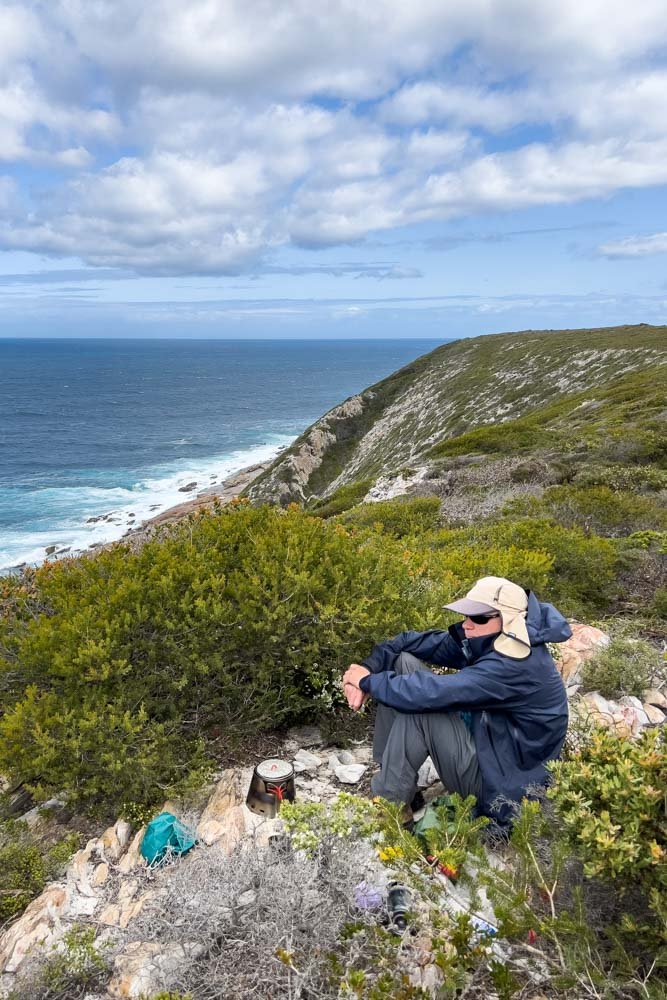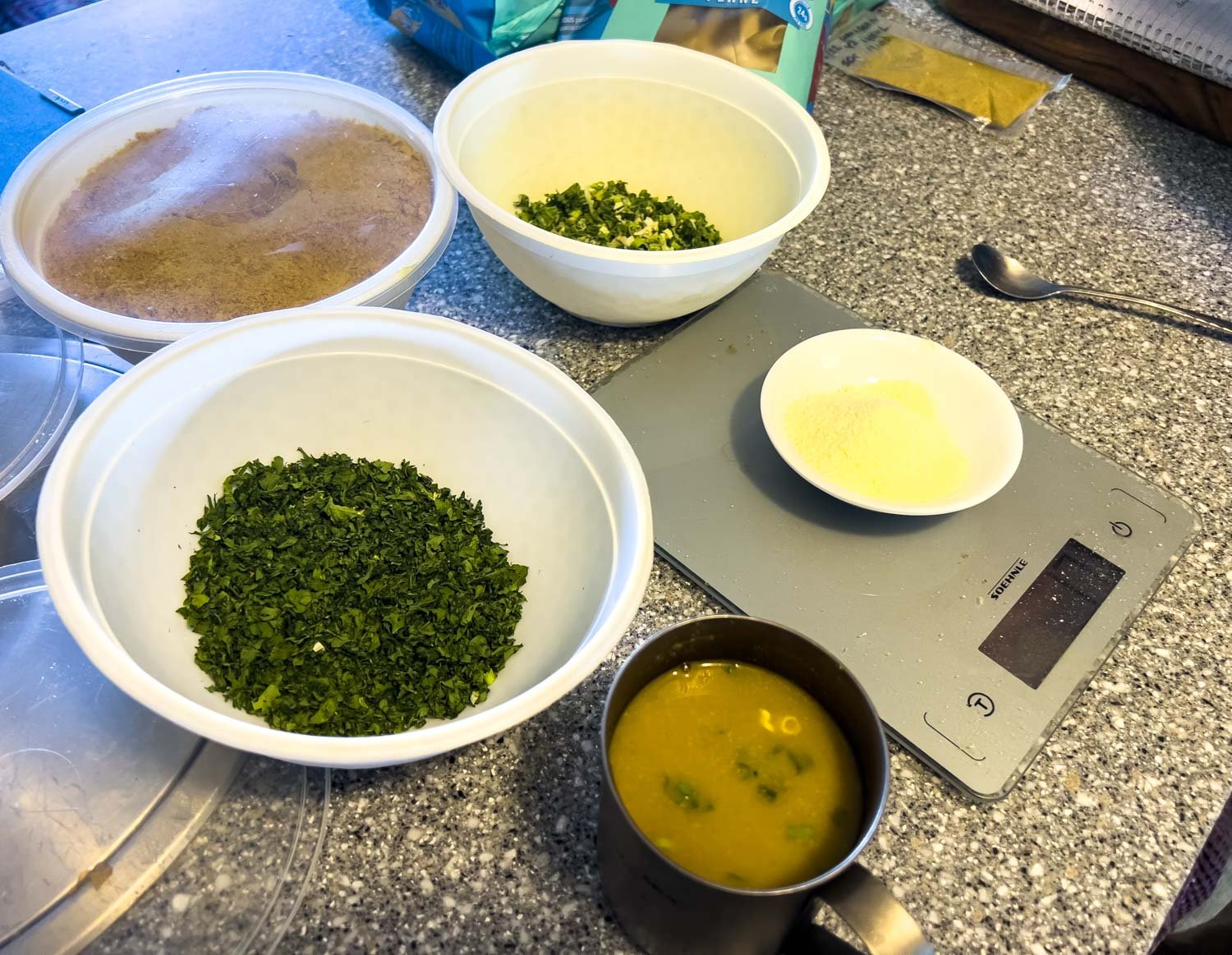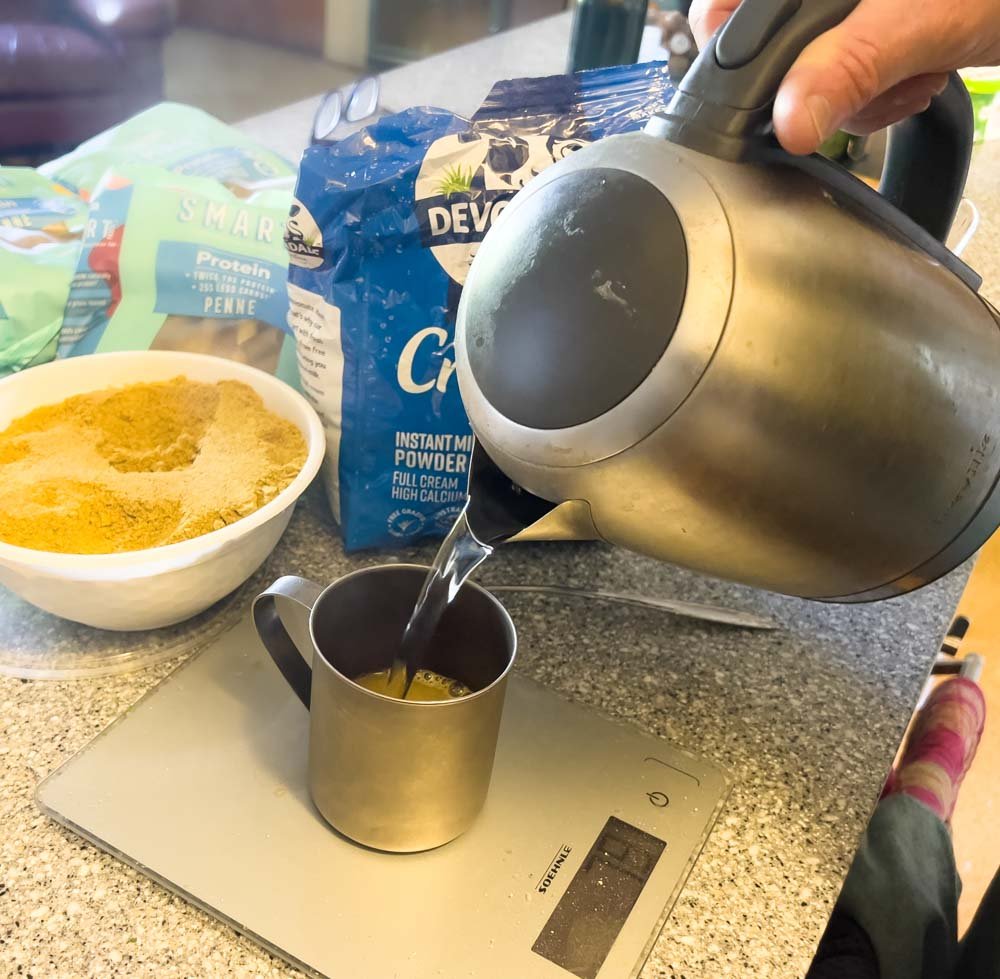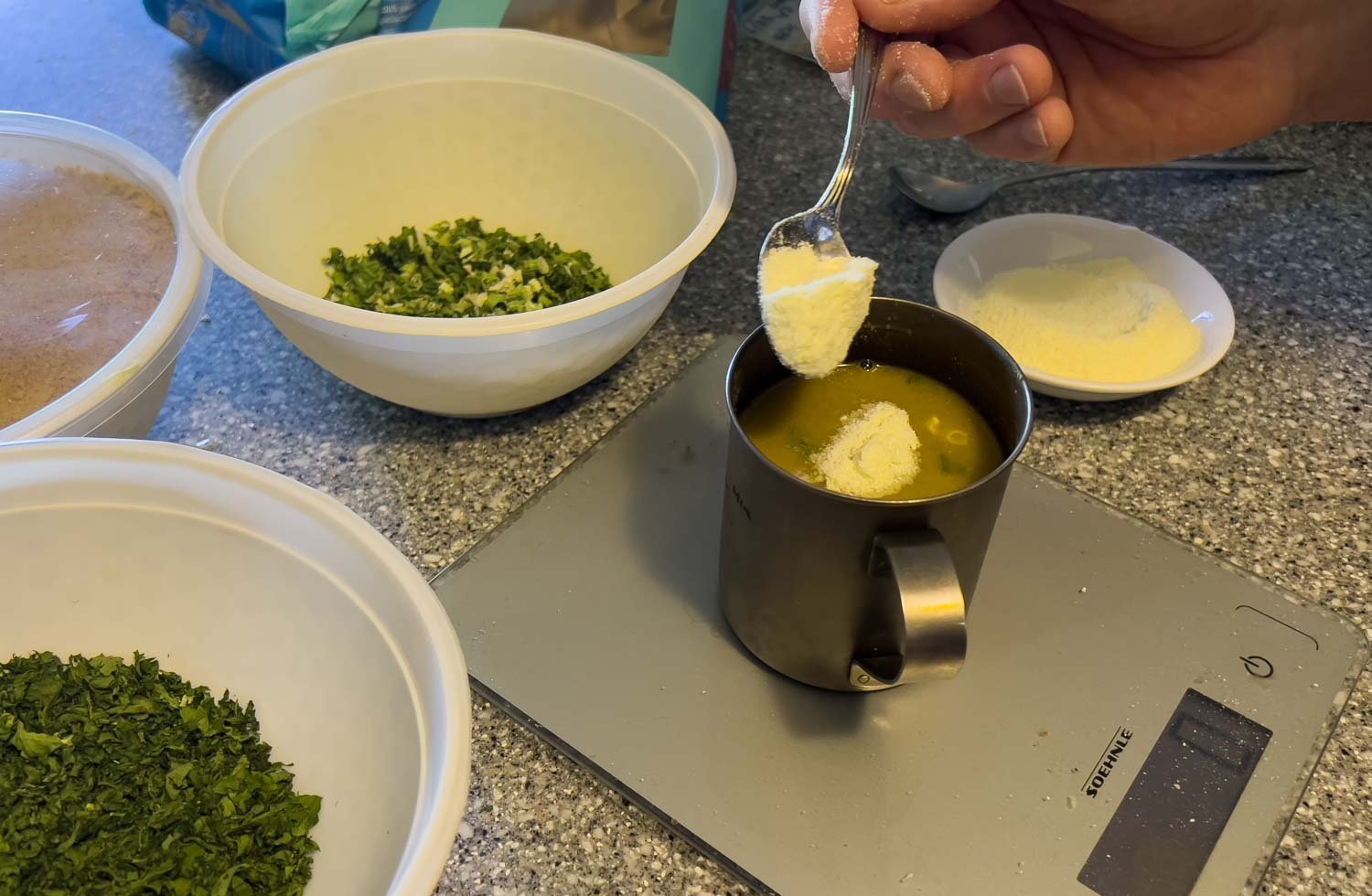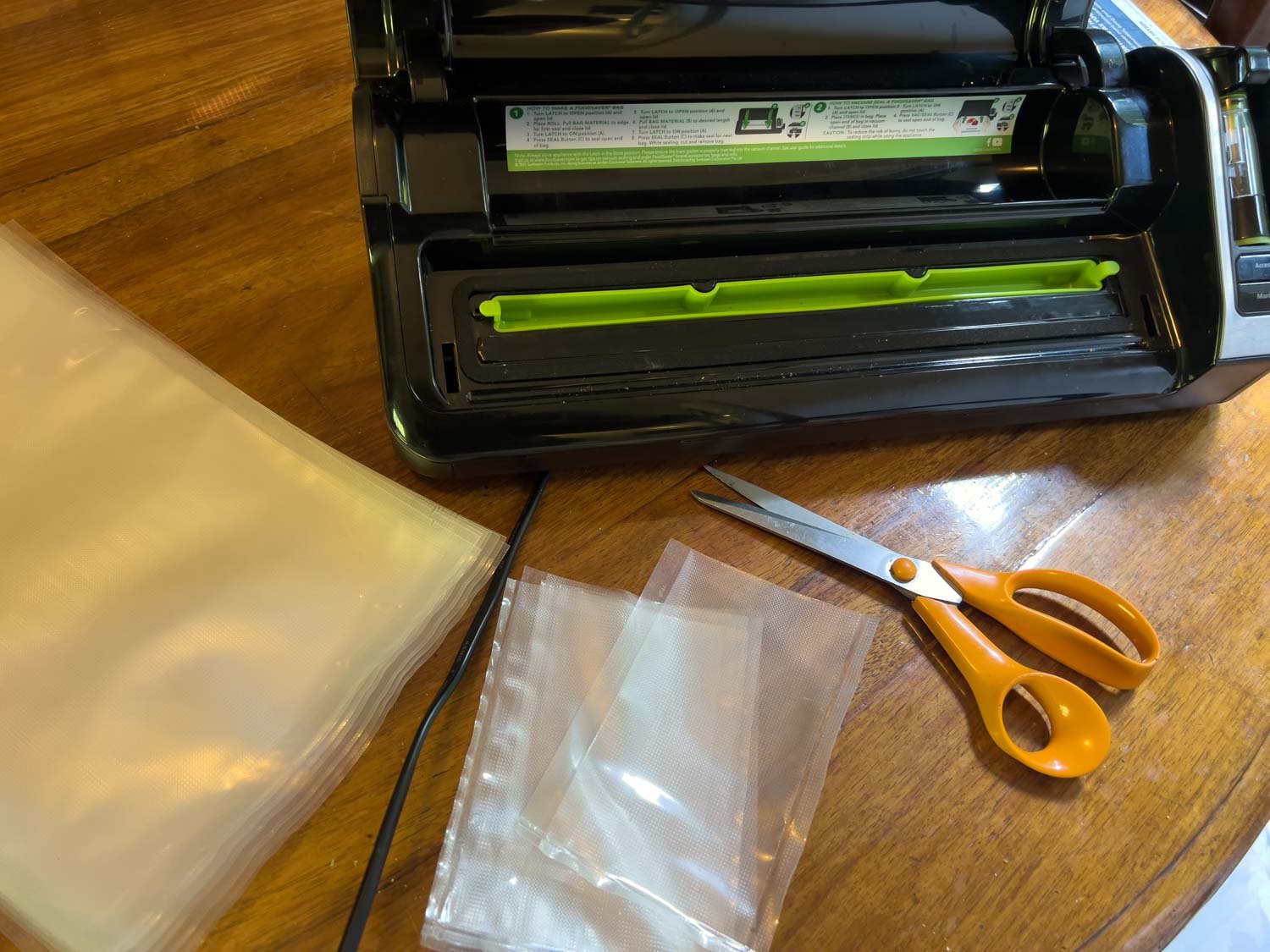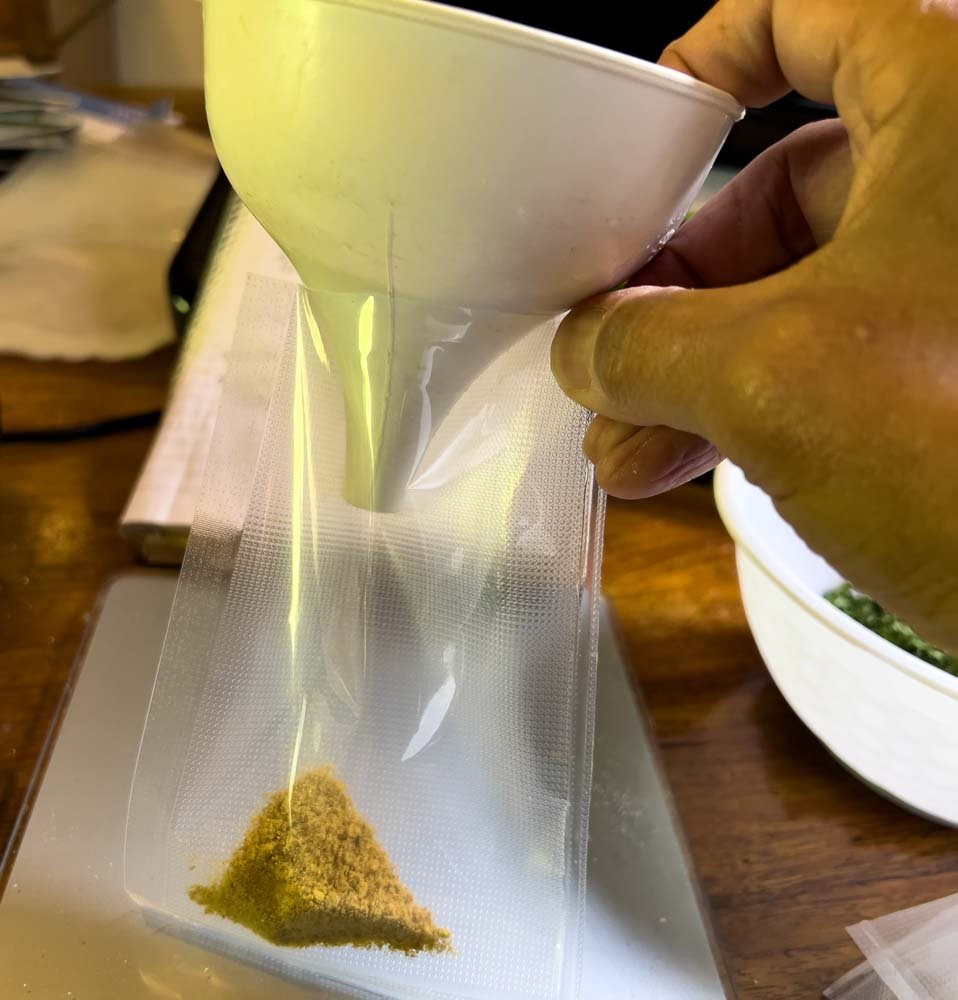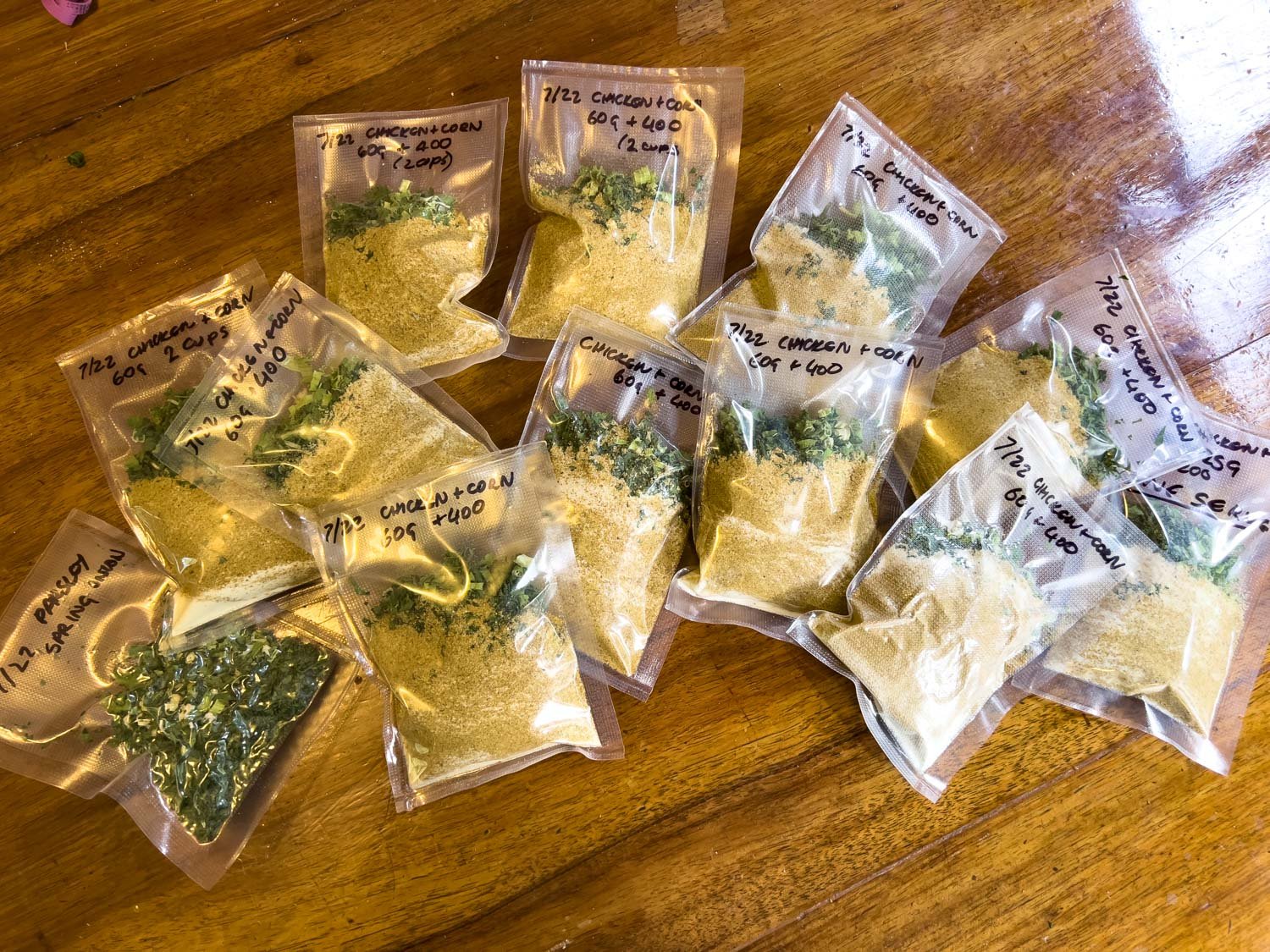Homemade Instant Cup-a-Soup 1: Dehydrated Cream of Chicken and Corn
Instant homemade cup-a-soup: healthy ingredients, packed with veg, plus texture pops from peas, corn, herbs and exactly the seasoning you prefer: yum!
This soup makes a perfect hiking lunch when accompanied by Geoff’s delicious sourdough crackers. We also suggest protein additives that rehydrate almost instantly.
The recipe can be as easy as you like with supermarket chicken stock (or vegetable stock), or buy chicken, chicken carcasses and fresh veg to make your own, with all the goodness from those bones. The creaminess comes from full cream milk powder added at the packaging stage, not during cooking, because dairy is not recommended for home-dehydrating.
With a few tweaks, you can even turn this lunch recipe into a hearty dinner. Either way, once you’ve made your own instant cup-a-soup powder, you’ll never go back to supermarket sachets!
The perfect leisurely lunch for cold windy days with views!
Ingredients
For the Stock:
4 chicken carcasses, roughly chopped and roasted on a baking paper-lined tray in a medium-hot oven until dark golden brown
3 chicken marylands (thigh and drumstick, skin on)
1 tbspn olive oil
3 onions roughly chopped
2 carrots roughly chopped
7 celery tops roughly chopped
1 knob garlic roughly chopped
2 leek tops, split, washed and roughly chopped
1 tbspn peppercorns
½ bunch thyme
3 bay leaves
Stems from 1 bunch parsley
For the Soup:
stock with all fat skimmed
1 tbspn olive oil
2 leeks sliced, white part only
2 carrots, sliced
9 corn cobs, kernels removed
½ bunch celery finely chopped
2 cans cannellini beans or chickpeas, drained (use the can water when making the stock)
3 tbspn flour
1 bunch parsley, finely chopped
1 bunch spring onion, finely sliced
Freeze dried (not dehydrated) peas and/or corn (optional)
Full cream milk powder
Seasoning
Recipe Hacks:
Use supermarket chicken stock instead of making your own
Budget Hack: use chicken necks instead of chicken marylands (roast necks with the carcasses)
Vegetarian Hack: substitute chicken with vegetable stock, milk powder with soy milk powder
Use dried herbs instead of fresh
Hearty Dinner hack 1: finely dice the soup veg instead of slicing. When cooked, drain in a colander set over a large bowl. Add all the beans and enough veg to the liquid in the bowl to make a medium thick puree that can be spread onto the dehydrator sheets; leave the rest chunky. Dehydrate on separate trays. Powder bark in a spice grinder and mix back in with the dehydrated veg (however, this dinner won’t be instant because of the chunky veg).
Easy Instant Dinner hack 2: follow the recipe but add extra freeze-dried peas and/or corn and/or the proteins listed at the end of this recipe. Make up your test recipe in a bowl rather than a cup.
Purchase instant cup a soup from the supermarket… nah, just kidding!
Method
For the Stock:
Over medium-high heat brown marylands in 1 tbspn oil in a large heavy-based pot and remove. Add another tbspn of oil and saute onions, carrot, garlic, celery and leek tops in the same large stockpot over medium high heat until softened. Return marylands to pot together with roasted bones, peppercorns and herbs plus enough water to just cover. Bring to the boil, then reduce heat to very low and scarcely simmer, covered, for 45 minutes or cooked through. Remove marylands, cool slightly then shred, returning skin and bones to the stock and retaining the shredded meat in a covered bowl for sandwiches and other uses (I usually eat some of the cream of chicken soup fresh at home, and add the shredded meat just before serving). Omit this step if using chicken necks.
Continue to simmer stock for 3 hours then strain, reserving liquid. Skim all fat from the surface.
For the Soup:
Sauté vegetables (except beans, parsley, spring onions and freeze-dried veg,) in 1 tbspn olive oil over medium heat until beginning to soften. Add flour and cook for a minute, stirring and scraping the bottom, then pour over defatted stock and continue stirring until soup returns to the boil. Reduce heat and simmer uncovered 30 mins, stirring occasionally, then puree with a stick blender. Depending on the size of your pot, your puree may be of spreadable consistency for dehydrating or still a bit too runny. You can return a little of the maryland meat to the stock to thicken it further, but I personally dislike the texture that results and prefer to thicken by pureeing in the beans, which also add protein without noticeably altering the taste or texture. (Adding beans also assists the powdering process).
Spread the puree THINLY onto silicone- or baking paper-lined trays; there’s no need to weigh anything now as you’ll be making a test batch later. Dehydrate at 62 C (145F): there may be no meat in the soup but the stock is meat-based and must therefore be dehydrated at a meat rather than vegetable temperature. If using vegetable stock and no chicken, dehydrate at 57C (135F). Flip bark halfway onto mesh and peel off the silicone/baking paper so the underside dries.
It’s essential to spread puree thinly or it won’t dry properly and be difficult to powder. Adding canned beans makes the bark more crumbly and easier to powder.
Place the spring onion and parsley on a separate tray and dehydrate. However, if you are taking your soup interstate with raw/uncooked product restrictions, you may need to add them at the end of the cooking time.
Once the bark is dry, break it up and powder it in a spice grinder. Due to the gelatine from the bones you used to make the stock, the sheets may be a little pliable while warm, especially if you haven’t added beans (we strongly recommend you do). As long as the sheets powder in the spice grinder, your soup will be fine. If there are pieces in the powder, sieve them out and return to the spice grinder for another go.
Spread your powder on trays in a just-warm, switched off oven for 20 minutes. Allow powder to cool.
Clockwise from top left: soup powder, dried spring onion, milk powder, reconstituted soup and dried parsley
Make up a test batch using your usual camp mug. Boil your kettle. Weigh a portion of powder into your cup, add a pinch or two of the dried herbs, then pour in boiling water and stir vigorously, scraping the bottom corners. Add weighed milk powder mix and season to taste, recording amounts and adjusting to your liking.
For lunch for two people (with crackers), we use 50g of soup powder, 10g milk powder, 4 pinches of herbs, a grind or two of pepper, two pinches of salt and 400ml boiling water for our two 300ml cups, but it’s completely up to you: use our amounts as a starting point and increase or decrease ingredients to your appetite, cup size and taste.
Optional Extras:
If you want extra texture, add a teaspoon of freeze dried peas and/or corn. Don’t use dehydrated peas or corn in this instant soup as they take much longer to rehydrate. You can add more for a dinner-sized soup.
For extra protein add protein powder or, for dinner serves in camp, you can add the following to the cold water before bringing it to the boil:
Roasted gluten or seitan
Snipped dried or fried beancurd sheets (knots take too long to rehydrate for instant soup), available at Asian supermarkets
Freeze dried tofu (don’t use home-dehydrated tofu as it won’t rehydrate instantly)
Packaging your Cup-a-Soup:
Ziplocs are okay for short-term storage, but I make small vac seal bags out of larger ones and use them for lunch soup.
Using a funnel when adding ingredients to sachets keeps the rim clean for a good seal.
To each bag add cooled, dry soup powder, milk powder, herbs, seasoning and freeze dried peas and corn if using. Partially vacuum only – this soup has no anti-caking agent and will compact hard if vacced too much. I store these in the freezer as the milk powder will go rancid faster than the other ingredients. If storing powder in bulk, ensure it’s fuIly dry and store in an airtight jar or ziploc Mylar bag with a dessicant sachet. Shake the jar daily for a week to help prevent clumping.
If using bean curd, freeze dried tofu or other chunkier ingredients, I add them from a separate bag when preparing the soup in camp because I don’t always want them, and they make the soup sachets bulky.
In Camp or on the Track:
Add soup to your cup. Bring water to the boil and pour into cup, stirring vigorously (if your pot is your cup, add powder to the water before it comes to the boil, stirring vigorously). Eat with Geoff’s sourdough crackers! Enjoy!
Delicious!


